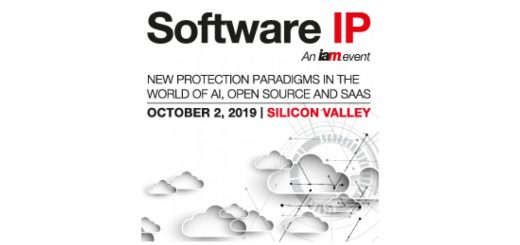WIPR Session – Event Summary
A WIPR Patents Live session on “Utilising IP Data to Effectively Gather Market, Business and Competitive Intelligence” was hosted on September 21, 2021, at 4 PM GMT+1. Faiz Wahid, Regional Head – Europe at Sagacious IP was the speaker and Tom Phillips, Group Editor at World Intellectual Property Review (WIPR) was the moderator of this insightful session.
Table of Contents
Agenda
The session was organized to shed light on three key points:
- How employing IP data intelligence can help companies in making the right decisions.
- Ways in which artificial intelligence (AI) and new tech tools are furthering the decision-making process.
- How different stakeholders have leveraged IP data to their advantage.
Notes from the Speaker
Today, a sizeable number of global IP rights are in force and available publicly. The enormity of this data can be gauged from the statistics by WIPO’s IP Statistics Data Center for the period 2010-19, which show that trademarks (close to 60 million) lead IP rights, patents (nearly 15 million) come a distant second, followed by utility models and industrial designs. Not just quantitatively but qualitatively also the current IP data is extremely crucial since it’s comprehensive, information-rich, highly structured, globally organized and most importantly it is also publicly accessible. For those wondering about the criticality of IP data for businesses, here’s the answer. Organizations require timely information about technology trends, competitors, and their own businesses to remain competitive or make informed business and technical decisions. And one of the data-driven and sure-shot ways to get reliable information is IP data.
Further, businesses are innovating aggressively to address the disruptions in their global consumer markets, which is occurring predominantly due to rapid urbanization, the shift in global economic power, technological breakthroughs as well as democratic and social changes. These trends, in turn, are fuelling consumer market disruption including the growing demand for smarter cities, mobility, industry 4.0 trends, etc. As a consequence of this, the intensity of innovation is also growing by leaps and bounds to meet consumer demands. But the downside of this high innovation is that it is putting pressure on corporate IP practices. While conventionally, these practices revolved around compliance, regulatory, and legal aspects of IP, the new age practices have the value-added tasks of informing business and product strategy, R&D, and innovation. Thus, creating new priorities for the IP departments like introducing new products into the market quickly, reclassifying IP portfolio due to internal business reorganizations, requirement of new-age technical skills for interdisciplinary innovations, and managing all this amid a scarcity of resources. Therefore, besides solving the technical and legal purposes, IP departments also need to offer market, business, and competitive intelligence such as keeping track of competitors, identifying potential business partners, and spotting technology or market trends.
So how exactly can IP data help? We believe that IP data can help in several business objectives – 8 of them are explained here. The first objective is patent monitoring that helps in maintaining a competitive edge over others, identifying patents related to the technology of interest, and/or monitoring patents for legal status, family continuation among others. The second objective is technology landscaping that enables customers to understand the evolution of a technology by offering an overview and analysis of patent information, technology improvements in the space regardless of ownership, and main contributors in the technology. The third objective is competitor benchmarking that involves analysis of competitors’ IP portfolio and R&D strategies, identification of gaps in terms of innovation and technology, assessment of companies, and analysis of threats to one’s market share. The fourth one is trend and white space analysis thatincludesanalysis of trends and share of IP among numerous sub-segments of the target technology, SWOT analysis, and determination of chances for innovation or IP protection. Technology scouting is the fifth one and involvesidentification of technology partners, assessment of emerging or key players across the value chain, and scouting technology for acquisitions. R&D problem scouting, the sixth one, includes increasing return on investment (ROI) from the R&D group by focusing on strategic topics and planning R&D efforts (R&D strategy) based on the IP trend analysis and problem statements presently addressed by the industry. The penultimate one is application scouting that involves identification of R&D solutions from existing IP knowledge to enhance one’s product/offering as well as identification of potential new applications for existing technology already owned by a business. Finally, opportunity scouting includes identification of investment opportunities such as new technology or product segment and mergers & acquisitions as well as identification of emerging market players that may or may not have an IP position such as start-ups/SMEs.
While we know the benefits of IP data (mentioned above), how can we access it? Well, new-age technologies such as artificial intelligence (AI), deep learning (DL), machine learning (ML), and big data are impacting different aspects of IP practices, starting from searching, proofreading, to monitoring. These technologies and the related tools are making IP data easily accessible for business users. Check out the IP Tools Hub initiative of Sagacious IP which provides an extensive library of IP tools.
In summary, a considerable amount of IP data is available today and it has evolved into a unique source of high-quality and structured information on technology markets, competition, etc. The exhaustive intelligence this data provides on niche areas must not be overlooked since it can help in timely R&D and technology business planning.
To view the presentation on “Utilising IP Data to Effectively Gather Market, Business and Competitive Intelligence”, click here and for any business inquiries, write to us at [email protected].




